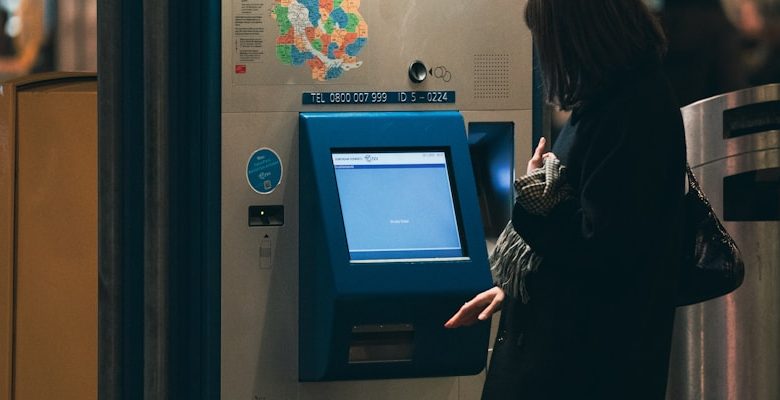How Decentralized Technologies Are Improving Cross-Border Payments in Crypto

- Introduction to Decentralized Technologies in Cross-Border Payments
- The Impact of Blockchain on International Money Transfers
- Advantages of Using Cryptocurrency for Cross-Border Transactions
- Challenges and Solutions in Implementing Decentralized Payment Systems
- Real-World Examples of Successful Cross-Border Payment Solutions
- The Future of Cross-Border Payments in the Crypto Space
Introduction to Decentralized Technologies in Cross-Border Payments
In the realm of cross-border payments, decentralized technologies have been making significant strides in improving efficiency and reducing costs. These innovative solutions leverage blockchain technology to facilitate seamless transactions across borders without the need for traditional banking intermediaries. This opens up new possibilities for businesses and individuals looking to send money internationally.
Decentralized technologies offer a more transparent and secure way to conduct cross-border payments. By using a distributed ledger system, transactions are recorded in a tamper-proof manner, ensuring that all parties involved can trust the validity of the transaction. This eliminates the need for costly and time-consuming verification processes, making cross-border payments faster and more cost-effective.
One of the key advantages of decentralized technologies in cross-border payments is the ability to bypass traditional banking systems. This means that transactions can be completed in a matter of minutes, rather than days, and at a fraction of the cost. Additionally, users have greater control over their funds and can track the progress of their payments in real-time.
Overall, decentralized technologies are revolutionizing the way cross-border payments are conducted. With the potential to make transactions faster, more secure, and more cost-effective, businesses and individuals are increasingly turning to these innovative solutions to meet their international payment needs. As the technology continues to evolve, we can expect even greater improvements in the efficiency and accessibility of cross-border payments.
The Impact of Blockchain on International Money Transfers
One of the most significant impacts of blockchain technology on international money transfers is the increased speed and efficiency of transactions. By utilizing a decentralized network, transactions can be processed and verified much more quickly compared to traditional banking systems. This means that individuals and businesses can send and receive money across borders in a matter of minutes, rather than waiting days for funds to clear.
Another key advantage of blockchain technology in cross-border payments is the lower cost associated with transactions. Because blockchain eliminates the need for intermediaries such as banks or payment processors, fees are significantly reduced. This is especially beneficial for individuals and businesses that regularly make international money transfers, as they can save a significant amount of money on fees over time.
Blockchain technology also offers greater security and transparency in international money transfers. Each transaction is recorded on a public ledger, making it nearly impossible for fraudulent activities to go unnoticed. This increased level of transparency helps to build trust between parties involved in the transaction, ultimately reducing the risk of fraud and ensuring that funds are transferred securely.
In conclusion, blockchain technology is revolutionizing the way international money transfers are conducted. With its ability to increase speed, reduce costs, and enhance security, blockchain is quickly becoming the go-to solution for individuals and businesses looking to send money across borders. As the technology continues to evolve, we can expect to see even greater improvements in cross-border payments in the future.
Advantages of Using Cryptocurrency for Cross-Border Transactions
There are several advantages to using cryptocurrency for cross-border transactions. One of the main benefits is the speed at which transactions can be completed. Cryptocurrency transactions are typically processed much faster than traditional bank transfers, which can take several days to clear. This means that businesses can send and receive payments in a matter of minutes, allowing for quicker access to funds.
Another advantage of using cryptocurrency for cross-border transactions is the lower fees associated with these transactions. When using traditional banking systems, fees can quickly add up, especially when transferring money across borders. Cryptocurrency transactions, on the other hand, generally have lower fees, making them a more cost-effective option for businesses looking to save money on international payments.
Additionally, cryptocurrency transactions offer greater security and privacy compared to traditional banking systems. When using cryptocurrency, transactions are encrypted and processed on a decentralized network, making them more secure and less vulnerable to fraud. This added layer of security can provide peace of mind for businesses conducting cross-border transactions.
Challenges and Solutions in Implementing Decentralized Payment Systems
Implementing decentralized payment systems comes with its own set of challenges that need to be addressed in order to ensure smooth and efficient cross-border transactions in the world of cryptocurrency. Some of the key challenges faced in this process include:
- Lack of widespread adoption: One of the main hurdles in implementing decentralized payment systems is the lack of widespread adoption among users and businesses. Without a critical mass of users, these systems may struggle to gain traction in the market.
- Regulatory uncertainty: The regulatory environment surrounding cryptocurrencies and decentralized payment systems is still evolving, leading to uncertainty and potential roadblocks in implementation. Clear guidelines and regulations are needed to foster trust and confidence in these systems.
- Scalability issues: Scalability remains a significant challenge for decentralized payment systems, especially when it comes to handling a large volume of cross-border transactions. Solutions need to be developed to ensure that these systems can scale effectively to meet growing demand.
- Security concerns: The decentralized nature of these payment systems can also pose security risks, such as potential vulnerabilities to hacking and fraud. Robust security measures need to be put in place to protect users’ funds and data.
- Interoperability challenges: Ensuring seamless interoperability between different decentralized payment systems is crucial for facilitating cross-border transactions. Standardization efforts are needed to enable easy communication and exchange of value between disparate systems.
To overcome these challenges and successfully implement decentralized payment systems for cross-border payments, various solutions can be explored:
- Education and awareness: Increasing education and awareness about the benefits and functionalities of decentralized payment systems can help drive adoption among users and businesses.
- Collaboration with regulators: Collaborating with regulators to develop clear guidelines and regulations for decentralized payment systems can help create a more favorable environment for their widespread adoption.
- Technology advancements: Continued advancements in technology, such as the development of layer 2 solutions and improved consensus mechanisms, can help address scalability and security issues in decentralized payment systems.
- Partnerships and alliances: Forming strategic partnerships and alliances with other players in the crypto space can help promote interoperability and create a more connected ecosystem for cross-border payments.
- Community engagement: Engaging with the crypto community and soliciting feedback can provide valuable insights for improving decentralized payment systems and addressing any existing challenges.
Real-World Examples of Successful Cross-Border Payment Solutions
In recent years, there have been several successful examples of cross-border payment solutions using decentralized technologies in the crypto space. These real-world applications showcase the potential for improving the efficiency and cost-effectiveness of international transactions.
One prominent example is Ripple, a blockchain-based payment protocol that enables real-time settlement of cross-border payments. By using its native cryptocurrency XRP as a bridge asset, Ripple’s network allows financial institutions to process transactions quickly and securely without the need for intermediaries. This has made it a popular choice for banks and remittance companies looking to streamline their cross-border payment processes.
Another example is Stellar, a decentralized payment network that focuses on facilitating low-cost cross-border transactions for individuals and businesses. Stellar’s platform uses its native cryptocurrency Lumens (XLM) to enable fast and affordable money transfers across borders. This has made it a preferred option for organizations looking to reduce the time and cost associated with international payments.
Additionally, projects like OmiseGO and VeChain have also gained traction for their innovative approaches to cross-border payments using blockchain technology. These platforms offer unique solutions that leverage decentralized networks to provide secure, transparent, and cost-effective payment options for users around the world.
Overall, these real-world examples demonstrate the significant impact that decentralized technologies can have on improving cross-border payments in the crypto space. As more organizations and individuals adopt these innovative solutions, we can expect to see further advancements in the efficiency and accessibility of international transactions.
The Future of Cross-Border Payments in the Crypto Space
As decentralized technologies continue to advance, the future of cross-border payments in the crypto space looks promising. These innovations are streamlining the process of sending and receiving funds across borders, making transactions faster, more secure, and more cost-effective.
One of the key benefits of decentralized technologies is their ability to eliminate intermediaries, such as banks, from the payment process. This not only reduces fees but also minimizes the risk of fraud and human error. Additionally, transactions can be settled in real-time, allowing for instant cross-border payments without the need for lengthy processing times.
With the rise of cryptocurrencies like Bitcoin and Ethereum, cross-border payments are becoming more accessible to people around the world. These digital assets can be sent and received across borders quickly and efficiently, without the need for traditional banking systems. This is especially beneficial for individuals in countries with limited access to financial services.
Furthermore, decentralized technologies are paving the way for increased transparency in cross-border payments. By utilizing blockchain technology, transactions can be securely recorded and verified on a public ledger, providing users with a clear and immutable record of their payment history. This not only enhances security but also builds trust among parties involved in the transaction.
In conclusion, the future of cross-border payments in the crypto space is bright thanks to the advancements in decentralized technologies. These innovations are revolutionizing the way we send and receive funds across borders, offering a faster, more secure, and more cost-effective alternative to traditional payment methods.



